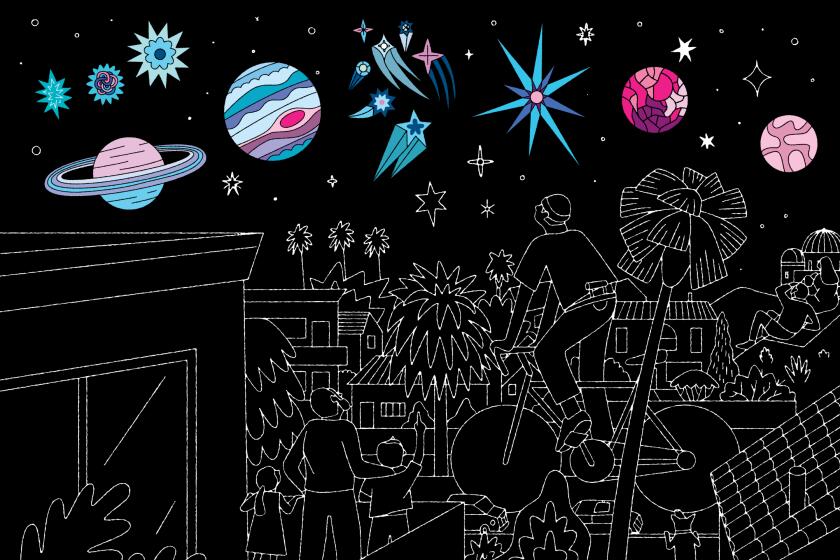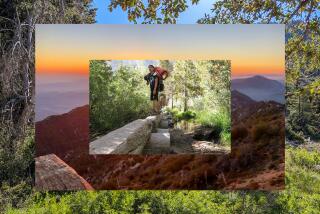Orionid meteor showers are happening now. Here’s where to watch
Halley’s Comet was last seen in the U.S. in 1986 and won’t return until 2061. The Earth is passing through bits of the comet’s debris — which show up as meteors, or shooting stars, in the sky — best seen late Tuesday/early Wednesday morning this week. They’ll continue to be visible in the early morning sky, usually starting at 1 or 2 a.m. until before dawn, through Nov. 7.
“Step outside before sunrise ... and if you catch sight of a meteor, there’s about a 75% chance that it likely is a byproduct of Halley’s Comet,” according to Space.com.
Get The Wild newsletter.
The essential weekly guide to enjoying the outdoors in Southern California. Insider tips on the best of our beaches, trails, parks, deserts, forests and mountains.
You may occasionally receive promotional content from the Los Angeles Times.
During the peak between 4:30 and 5:40 a.m. Wednesday, you can expect to see about 20 meteors per hour shooting past at 41 miles per second. You may see the streak or train of a meteor, which lasts several seconds to minutes, or an explosion of light called a fireball, according to Nasa.gov.
Good viewing conditions are predicted because moonlight won’t interfere (the moon sets earlier). The L.A. forecast calls for clear to partly cloudy skies. However, to have a clear view of the night sky, you need to go somewhere dark and far from city lights. Remember to dress in layers, lie flat on the ground (on a tarp or sleeping bag) and look up from a tree-free spot.
The sky above is filled with wonders; you have only to leave your house and look up to see stars, planets, the moon and so much more. Here’s how to get started.
Maybe you’ve got a great backyard that’s super dark at night. If not, here are some local places to go that may work for viewing (provided skies remain clear).
- A short drive up the Angeles Crest Highway (Highway 2) above La Cañada Flintridge will take you to at least two scenic pull-offs before the road closure 5 miles beyond the intersection with the Angeles Forest Highway. The highway has been shut for more than a month because of the Bobcat fire.
- Trails and land in the Santa Monica Mountains National Recreation Area are open 24/7. Make sure you consult a map and know where you’re going before you set out. Though parklands are open, parking lots aren’t. Check where you can safely pull off and park at a trailhead or park access point.
- Big Bear Lake and Lake Arrowhead, at an elevation of 5,000 to 6,700 may offer good viewing in a forest setting.
- Desert areas such as Joshua Tree and Death Valley are terrific viewing spots because skies are dark, and few trees or shrubs block your view. Both have been designated International Dark Sky Parks.
More to Read
Sign up for The Wild
We’ll help you find the best places to hike, bike and run, as well as the perfect silent spots for meditation and yoga.
You may occasionally receive promotional content from the Los Angeles Times.








